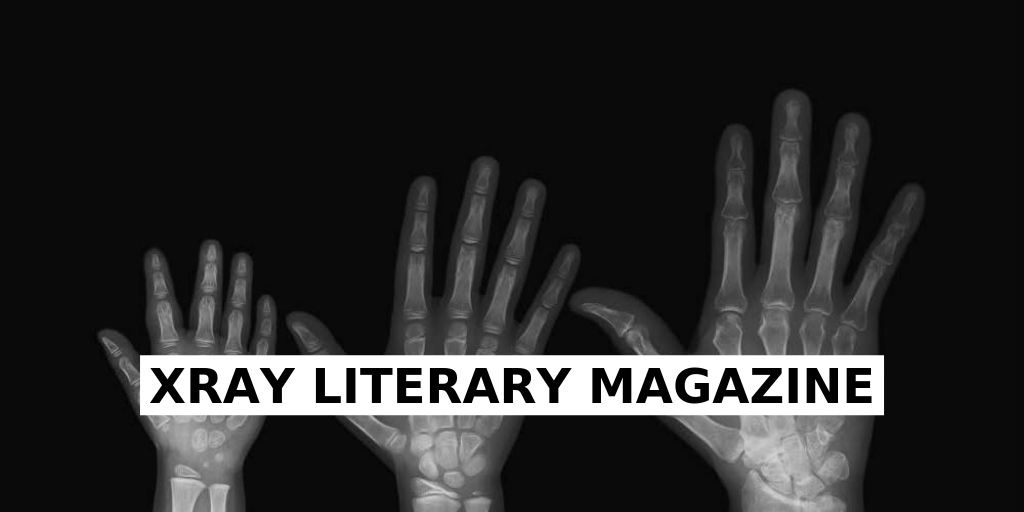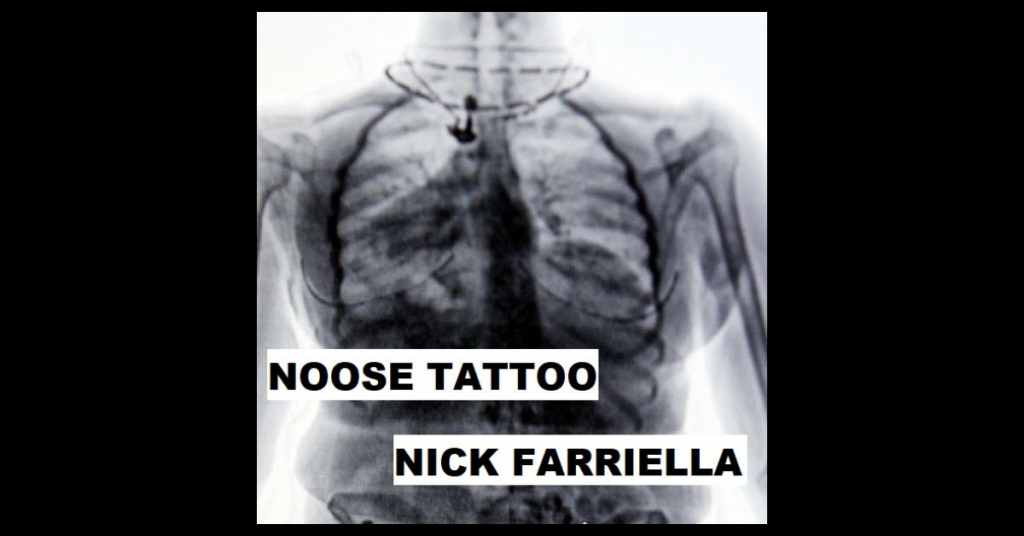
CRACKED by Nick Farriella
Someone who was once very famous, but not so much anymore, said, “Every whole person has ambitions, initiatives, goals,” about a boy who was very particular and wanted to press his lips to every square inch of his own body. This is not about said boy, but a different boy, a peculiar boy who had never read that story and whose goal was to crack every joint, every ligament, every air pocket and poppable piece of cartilage in his body. The boy was seven.
The origins of this habit, to which he simply called “Cracking” were unknown to him, but if given some thought he might be able to discern two instances in his young life that would have acted as trigger events—as in unrelated, seemingly random phenomenon that took place in distinct separate moments of time, the way a few talks behind closed doors in one nation and one act of violence in another, coordinate with bubbling protests in a third-world country, inevitably leading to a world war. That’s what this was for the boy, a war with his body, a war with tightness and pressure. The two aforementioned random and insignificant events that led to this curiosity, if brought to the front of his memory and studied, would be as such:
1. Driving on I-80 heading south in his mother’s minivan, probably somewhere in Virginia—the strip of VA that feels endless—looking out at the passing nothingness and earnest poppy billboards of advertisements remnant of the ’70s from the back seat, the then three or four-year-old boy, out of boredom mostly, had an urge (probably subconscious) to squeeze his index finger down into his palm until the metacarpophalangeal joint, commonly known as the base knuckle, suddenly popped.
2. Since the knuckle popping car incident, the boy began bending, squeezing, twisting, clenching, extending, contorting and pretzeling each of his fingers until he achieved loud pops and high cracks along each of his metacarpophalangeal, proximal interphalangeal, and distal interphalangeal joints, which led to frustration, swollen fingers, and––inevitably––boredom. That was until almost a year later when the boy was four or five and had started playing recreational tee-ball down at Dawson Park every Tuesday and Thursday. At his first practice on an especially wet April evening, he joined the team of boys and girls for stretches. The first of which was a Lumbar Rotation Stretch––lying supine, arms spread, right leg over the left making the shape of a capital P. At first, he felt stupid being crossed and soaked on the grass of the outfield, but after a gentle (probably subconscious) lean into the pose, his spine rattled like a string of firecrackers, consequentially blowing his young mind. Later, he would do research on the internet to discover he had cracked from the L3 or L2 vertebrae of his lumbar spine (lower) all the way up to the T6 or T5 vertebrae range of his thoracic spine (middle), becoming open to the idea that each of his vertebrae were labeled with numbers and letters, wondering if the rest of his joints were labeled, because if so, he could treat his body like a game of Connect-the-Dots, just with cracks instead of ink.
By the age of seven, the boy was Cracking pretty much all day aside from periods of non-cracking to let his joints fill with air, which he liked to imagine as bubbles filling each crevice of bone and tissue. The cracking, which started as a curiosity, had now—after the concept of pain, like human suffering level of psychic pain, which he begun to feel after his parent’s divorce—had now become an obsession. From the time he woke up, he had a routine of Cracking that he would cycle through. First, he started with the back. Supine, he would lift one leg over the other with his arms out and jerk back, twisting upward; this would cause a cracking sensation similar to the baseball stretching incident, a lineage of cracks, but sometimes only a deep thud or worse, no cracks, and he would feel a sense of tightness swelling in his back, which would mean that was a bad day. Next came each finger in six different ways, followed by each toe in three different ways; he found that his toes were harder to crack, because instead of having three joints like the fingers, the toes only had one—the interphalangeal joint. Lastly came the neck. Sitting up in bed, he didn’t crane his neck slowly, as some videos on Youtube had suggested. Instead, he whipped his ear towards his shoulder, getting a consistent slash of cracks on each side. When once witnessed by his mother at breakfast, she had said, “That looks like you’re going to snap your own damn neck.”
Which he did by the winter of that year.
The boy was now ten and after three crack-less years due to snapping his C2, C3, and C4 cervical vertebrae in his neck, he felt tight like all hell and ready and motivated to release every sac and joint that had filled with air and fluid since his accidental injury. Apart from the sullen days of recovery and times in which he could almost feel a part of himself dying inside from seeing his lonely mother float around the house like a ghost, the boy still remained hopeful that one day he could get to a point where he no longer felt the immense pressure build-up, the tightening and squeezing pain he routinely felt not just in his joints, but also in his mind and his heart, that one day, maybe if lucky, he would be able to finally crack and relieve that pressure from deep within and he could, if lucky, go back to how he felt when he first starting cracking, before the divorce, just a loose and curious boy with nothing but a field of happiness in which he could grow.
So, to get better at Cracking he began watching more YouTube videos titled, “Epic Cracks” for inspiration and within three months of having his neck cast off, he was back to cracking every vertebra and joint in his back, neck, fingers, and toes.
His mother, bless her big southern heart, started to get worried about the boy again when he would grow agitated at not being able to crack certain parts of himself. He would tantrum—crying, swinging fists, throwing his clothes off at a jammed knuckle that wouldn’t budge. She considered taking to him to see the town therapist to have her run some tests, as she saw all this cracking as a possible manifestation of some internal strife—what her mother, the boy’s grandmother, would call, “The Devil’s Innards.” But she was not her mother; she was more of her father that didn’t believe in the devil or the psychiatric arts, for that matter. Not to mention that she probably felt a little guilty for the so claimed internal strife for the epic meltdown that was her marriage. So, she let the boy fuss and pop and crack, figuring it was just a weird phase, like all young boys go through to navigate their world.
The Cracking seemed to mean more to the boy than just a routine or phase because over time he had learned how to contort himself in all strange ways to crack more and more advanced spots in his frail, thin body, as if the cracking itself, meaning the act of cracking and the short time in which he was relieved of tension, became his sole purpose for living, like he was living for the few minutes of relief at a time. He would snap his wrists back like he was revving a motorcycle for a good crack; twist his arms to crack his elbow and shoulder joints; spread his legs out in a horse stance and thrust his hip to each side until both flexors popped; spin his ankles like pinwheels; press his hands along his shins, forearms, ribcage, collar bones, and femurs looking for cracks; collapse his knees, tucking both legs underneath him, bounce until each gave the sound of victory. Craaaaaack.
One night, after the boy had used his desk chair to dig into his lumbar spine for a few good cracks, the boy felt a strange new pressure in the center of his chest. It had felt like gas had seeped in and was causing him to feel bloated and tight. He felt that he needed to crack there. Unsure of how he could get it done, he first pressed his chest up against the side of his bed frame. Instead of a crack, the wooden post just dug into his sternum and made the pain worse. He then went over to his medicine ball and laid on his back and stretched while gently rolling back and forth, but the pressure just would not budge. Next, he thought he could press down each vertebra in his sternum using his thumb, the way he had discovered places to crack on the top of his foot. But, with each press, he felt more and more pain, until finally, in agitated surrender, the boy stretched his arms far-out and reached each behind his back with a jolt, until the tips of his fingers nearly touched in a Sistine-like way. Alas, a massive crack shuddered through his chest and released a wave of tingles through his ribs, up across his shoulder blades, and down his arms to his fingertips. He fell back onto the floor, frozen like a mannequin that had been pushed over. A wave of cold sensitivity rushed through him and soon he felt nothing, just stillness, free of pressure and tightness. He had done it; he had cracked his way into eternal bliss, never having to feel anything ever again.

